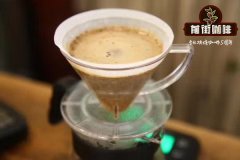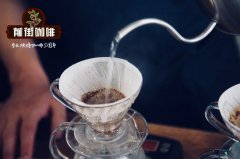Main coffee producing countries in Africa | introduction to the flavor characteristics of bean seed producing areas of Kenyan coffee

Professional coffee knowledge exchange more coffee bean information please follow the coffee workshop (Wechat official account cafe_style)
A brief introduction to the growing conditions of Kenyan Coffee from Qianjie-African Coffee producing area
Kenya is located in Kenya below the equator of East Africa. The coffee beans planted are high-quality Arabica, thick and round in meat, and divided into seven grades according to the size of the beans, and the taste is divided into six grades from top to bottom. "Kenya AA" is highly praised and respected in the taste recommendation, with a slightly sour and thick fragrance, which is very popular with Europeans, especially in the UK. Kenyan coffee has surpassed Costa Rican coffee to become one of the most popular coffees.
Boutique coffee producing areas are mainly from the following counties: Nyeri Neri, Kirinyaga Kirinaga, Murang'a Mulanka. In addition, Embu Enbu and Laikipia Lecipia are also common.
The main varieties of Kenya are SL28 and SL34. It is cultivated and named by "Scott Laboratories". SL28 and SL34 are genetic variants. The goal of cultivating SL28 was to mass produce coffee beans with high quality and resistance to diseases and insect pests. Although the yield of SL28 is not as high as expected, copper leaf and broad bean-shaped beans have great sweetness, balance and complex flavor, as well as significant citrus and black plum characteristics. While SL34 is similar to SL28 in flavor, except for its complex acidity and great sweetness, it is heavier, more full-bodied and cleaner than SL28. SL34 beans are similar to SL28 in appearance, but are more adaptable to sudden heavy rain.
Kenyan coffee is mainly treated by water washing. Kenyan water washing starts with the general water washing process, first naturally ferments for 12 hours (with a PH value of 4.5-4.8), then washes off 80%-90% pectin layer, rinses and cleans in natural fermentation for 24 hours, then soaks in water for 24 hours, dries and then enters the warehouse.
Kenya coffee is graded according to particle size and flavor. The particle size of AA, AB and PB,AA is 17 mesh and 18 mesh, and AB is 15 order and 16 order. PB is PEABERRIES. The flavor grade of TOP, PLUS, FAQ,FAQ- "Fair to Average Quality" will have some slight defective beans, but it will not affect the flavor.
Knowledge expansion: washing will brighten the acidity of coffee beans and reflect rich fruit flavors. Kenyan coffee with bright fruit aromas and acidity is regarded as a favorite product of many people in the coffee industry. Kenyan coffee has thus won the reputation of "cup of connoisseurs".
In short: Qianjie is a coffee research hall, happy to share the knowledge about coffee with you, we share unreservedly just to make more friends fall in love with coffee, and there will be three low-discount coffee activities every month. The reason is that Qianjie wants to make more friends drink the best coffee at the lowest price, which has been Qianjie's tenet for 6 years!
END
Important Notice :
前街咖啡 FrontStreet Coffee has moved to new addredd:
FrontStreet Coffee Address: 315,Donghua East Road,GuangZhou
Tel:020 38364473
- Prev

Is the Kenyan coffee bean good to drink when concentrated? is the Kenyan Osaya coffee bean good to drink as SOE?
For more information on coffee beans, please follow Coffee Workshop (Wechat official account cafe_style) Kenya Thuti AB, the Washed Othaya Farmers' Cooperative has established a partnership with about 550farmers from Neyri region in central Kenya. Most coffee trees growing in this area mature and grow slowly, producing super-hard coffee beans. Thuti Mill is located in K
- Next

Is Nicaraguan coffee beans suitable for espresso?
Professional coffee knowledge exchange for more information about coffee beans, please follow the coffee workshop (Wechat official account cafe_style) Nicaragua San Francisco, Washed San Francisco is named after the grandfather of its current boss Martin Gadea. The family grows other crops, but coffee is their main source of income. For the past few years, Martin has been
Related
- Beginners will see the "Coffee pull flower" guide!
- What is the difference between ice blog purified milk and ordinary milk coffee?
- Why is the Philippines the largest producer of crops in Liberia?
- For coffee extraction, should the fine powder be retained?
- How does extracted espresso fill pressed powder? How much strength does it take to press the powder?
- How to make jasmine cold extract coffee? Is the jasmine + latte good?
- Will this little toy really make the coffee taste better? How does Lily Drip affect coffee extraction?
- Will the action of slapping the filter cup also affect coffee extraction?
- What's the difference between powder-to-water ratio and powder-to-liquid ratio?
- What is the Ethiopian local species? What does it have to do with Heirloom native species?

